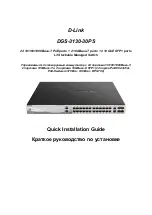
200
Figure 4-11-1
Client
—the device (workstation) that requests access to the LAN and switch services and responds to requests from
the switch. The workstation must be running 802.1X-compliant client software such as that offered in the Microsoft
Windows XP operating system. (The client is the
supplicant
in the IEEE 802.1X specification.)
Authentication server
—performs the actual authentication of the client. The authentication server validates the
identity of the client and notifies the switch whether or not the client is authorized to access the LAN and switch services.
Because the switch acts as the proxy, the authentication service is transparent to the client. In this release, the Remote
Authentication Dial-In User Service (RADIUS) security system with
Extensible Authentication Protocol (EAP)
extensions is the only supported authentication server; it is available in Cisco Secure Access Control Server version 3.0.
RADIUS operates in a client/server model in which secure authentication information is exchanged between the
RADIUS server and one or more RADIUS clients.
Switch (802.1X device)
—controls the physical access to the network based on the authentication status of the client.
The switch acts as an intermediary (proxy) between the client and the authentication server, requesting identity
information from the client, verifying that information with the authentication server, and relaying a response to the client.
The switch includes the RADIUS client, which is responsible for encapsulating and decapsulating the Extensible
Authentication Protocol (EAP) frames and interacting with the authentication server. When the switch receives EAPOL
frames and relays them to the authentication server, the Ethernet header is stripped and the remaining EAP frame is
re-encapsulated in the RADIUS format. The EAP frames are not modified or examined during encapsulation, and the
authentication server must support EAP within the native frame format. When the switch receives frames from the
authentication server, the server's frame header is removed, leaving the EAP frame, which is then encapsulated for
Ethernet and sent to the client.
Содержание IFS NS3550-24T/4S
Страница 1: ...P N 1072569 REV 00 05 ISS 11OCT12 IFS NS3550 24T 4S User Manual ...
Страница 37: ...User s Manual of NS3550 24T 4S 37 ...
Страница 96: ...96 Figure 4 4 6 Port Mirror Configuration Page Screenshot ...
Страница 127: ...User s Manual of NS3550 24T 4S 127 Figure 4 6 10 Port 1 Port 6 VLAN Configuration ...
Страница 151: ...User s Manual of NS3550 24T 4S 151 Figure 4 8 1 Multicast Service Figure 4 8 2 Multicast Flooding ...
Страница 184: ...184 Figure 4 9 14 Voice VLAN Configuration Page Screenshot ...
Страница 204: ...204 Figure 4 11 4 Network Access Server Configuration Page Screenshot ...
Страница 234: ...234 Figure 4 12 1 Port Limit Control Configuration Overview Page Screenshot ...
Страница 250: ...250 Click to undo any changes made locally and revert to previously saved values ...
Страница 297: ...User s Manual of NS3550 24T 4S 297 ...
Страница 388: ...388 Example Show RADIUS statistics SWITCH security aaa statistics ...
Страница 410: ...410 Parameters vid VLAN ID 1 4095 Default Setting disable ...
Страница 441: ...User s Manual of NS3550 24T 4S 441 Example Enable the mirror mode for port 1 4 SWITCH mirror mode 1 4 enable ...
















































